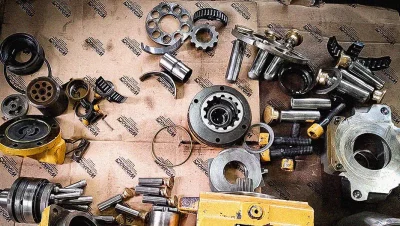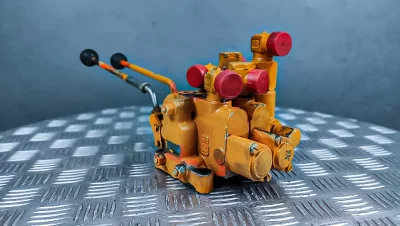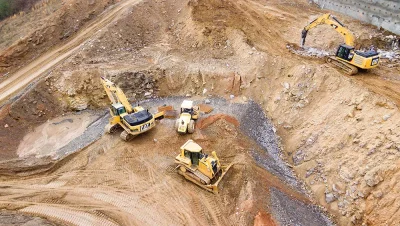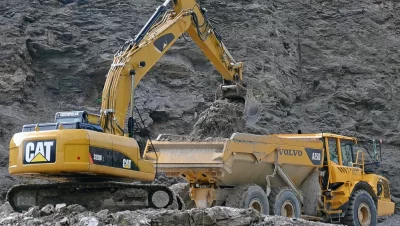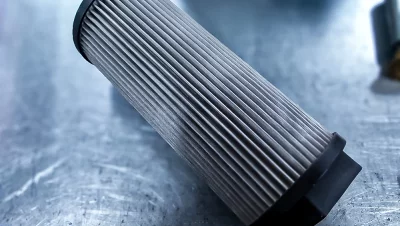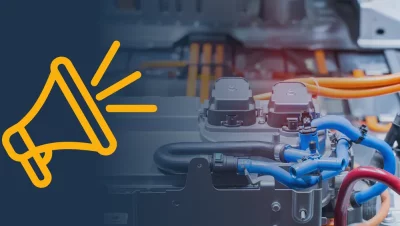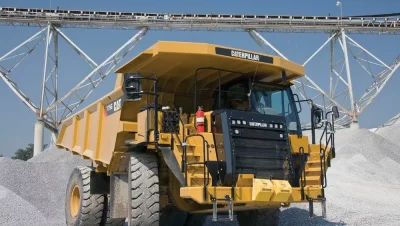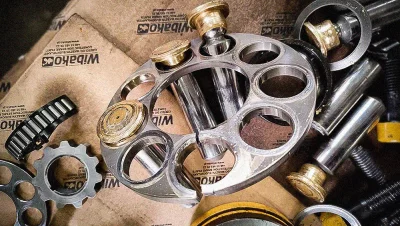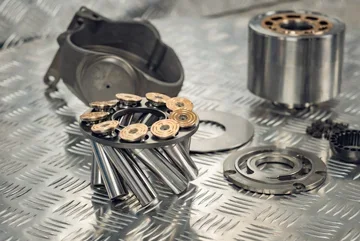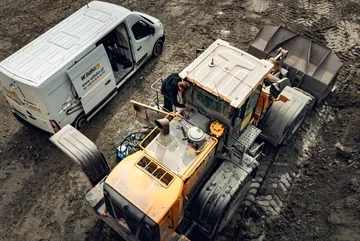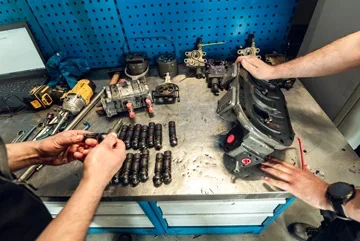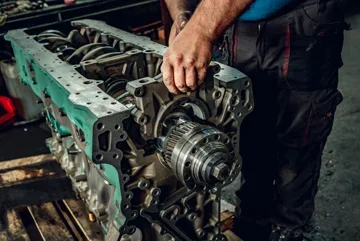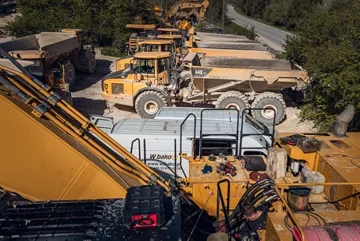Hydraulic pumps are the heart of every construction machine
One of the most commonly found units in excavators and other heavy equipment is the Kawasaki K5V200 model. In today's post, we will show you what the disassembly and verification of this model looks like, and we will share our workshop experience.
What is the K5V200 pump?
The K5V200 model is a more modern version of the classic K3V pump. Although it is based on a similar design, several significant improvements have been made:
- Modernized design – smaller size, more compact structure,
- Integrated oil turbine, which improves the system's power supply,
- New regulators, which, although modified, still retain the characteristic features of Kawasaki pumps.
The pump we disassembled came from a Volvo EC 480 machine – one of the most frequently serviced excavators in our hall.
Step by step: disassembly of the pump
We started by dismantling the front and rear pump regulators. The elements were marked and labeled to ensure full compliance with the original during reassembly. Next, we separated the housing and reached the interior – the supply turbine, characteristic of the "post-lift" version, came to the forefront. After removing the oil, we proceeded to extract the rotary group. This is where the most wear-prone components are located.
Typical damages of K5V pumps
As the verification showed, the greatest wear concerned:
- Cradle with a tilting plate – the element was significantly scratched and unsuitable for further use,
- Piston and separator sets – signs of seizure and wear were visible,
- Working surfaces – scuffing indicated the pump's exhaustion.
All worn components were replaced – in accordance with good service practice. On this occasion, we remind you that not replacing worn parts in time can lead to the failure of the entire hydraulic system, and consequently – to the machine's stoppage on the construction site.
Assembly and final test
After thorough washing and cleaning, we proceeded to assembly. All new components – pistons, separators, tilting plates, and seals – were precisely fitted. The assembled pump went to the test stand. It passed the test positively, without the need for adjustment corrections. This confirmed that the problem was not the pump itself, but the preventive replacement of components helped avoid future failure.
Why are these pumps so popular?
The K5V200 pump is a reliable, frequently encountered hydraulic unit that, with proper servicing, can last for many years. Replacing key components, even before they fail, helps avoid costly downtimes and damage to the entire system.
The entire video can be seen here.





